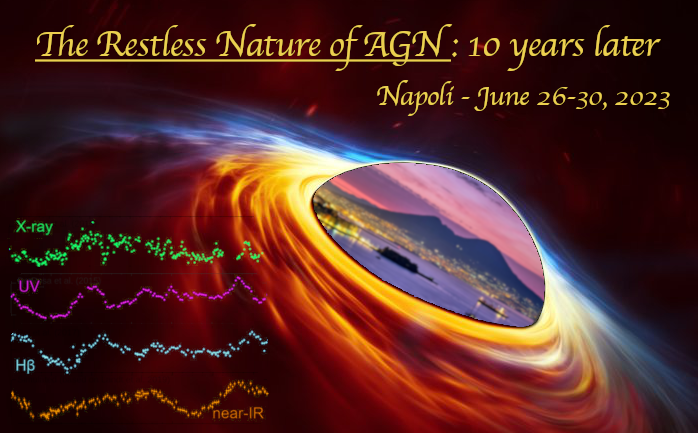Speaker
Description
Obscuration in active galactic nuclei (AGN) has been largely studied all over the electromagnetic spectrum. It is commonly accepted that the obscuration is caused by a “dusty torus”, i.e., a distribution of molecular gas and dust located at ∼1–10 pc from the accreting supermassive black hole (SMBH). While the existence of this obscuring material is universally accepted, its geometry and chemical composition still remained unknown. Several works reported observational evidence favoring a “clumpy torus” scenario, where the obscuring material is distributed in clumps formed by optically thick clouds. If the obscuring torus is indeed inhomogeneous, one would expect to observe significant variability in the torus line-of-sight column (l.o.s.) density (NH,l.o.s.) and even, in some cases, a “changing look” scenario, i.e., a transition from a Compton-thick (CT-) state (where NH,l.o.s.>10^24 cm^−2) to a Compton-thin or vice-versa. Within this framework, I will present our analysis of NGC6300, a local Seyfet-2 AGN, using multi-epoch observations over a span of 13 years (2007-2020) using Suzaku, Chandra and NuSTAR. We have used physically motivated uniform torus model- borus02, and clumpy torus models- UxClumpy and Xclumpy to produce a comprehensive and systematic analysis of the obscuring medium. Even though we do not find any changing-look nature for NGC6300, but the recent Chandra observation of 2020 showed a considerable flux dip (~60%) confirming the variable nature and laying the ground for follow-up X-ray observations for this source. Finally, I will conclude on using multi-component models to analyse the AGN SED in mid-IR band and producing a joint analysis of mid-IR SED-derived view of the obscuring torus with the X-ray perspective.

